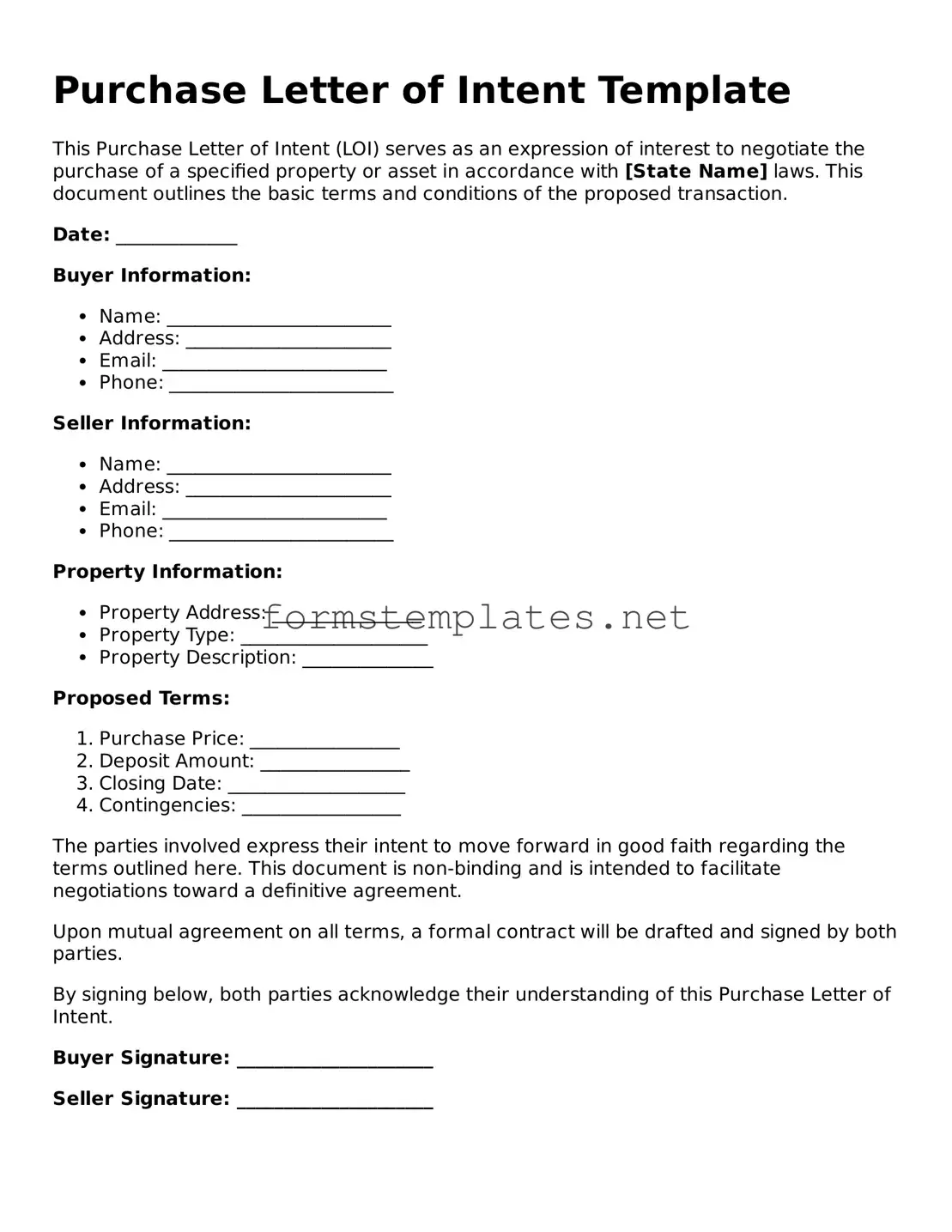Purchase Letter of Intent Template
This Purchase Letter of Intent (LOI) serves as an expression of interest to negotiate the purchase of a specified property or asset in accordance with [State Name] laws. This document outlines the basic terms and conditions of the proposed transaction.
Date: _____________
Buyer Information:
- Name: ________________________
- Address: ______________________
- Email: ________________________
- Phone: ________________________
Seller Information:
- Name: ________________________
- Address: ______________________
- Email: ________________________
- Phone: ________________________
Property Information:
- Property Address: ________________
- Property Type: ____________________
- Property Description: ______________
Proposed Terms:
- Purchase Price: ________________
- Deposit Amount: ________________
- Closing Date: ___________________
- Contingencies: _________________
The parties involved express their intent to move forward in good faith regarding the terms outlined here. This document is non-binding and is intended to facilitate negotiations toward a definitive agreement.
Upon mutual agreement on all terms, a formal contract will be drafted and signed by both parties.
By signing below, both parties acknowledge their understanding of this Purchase Letter of Intent.
Buyer Signature: _____________________
Seller Signature: _____________________
